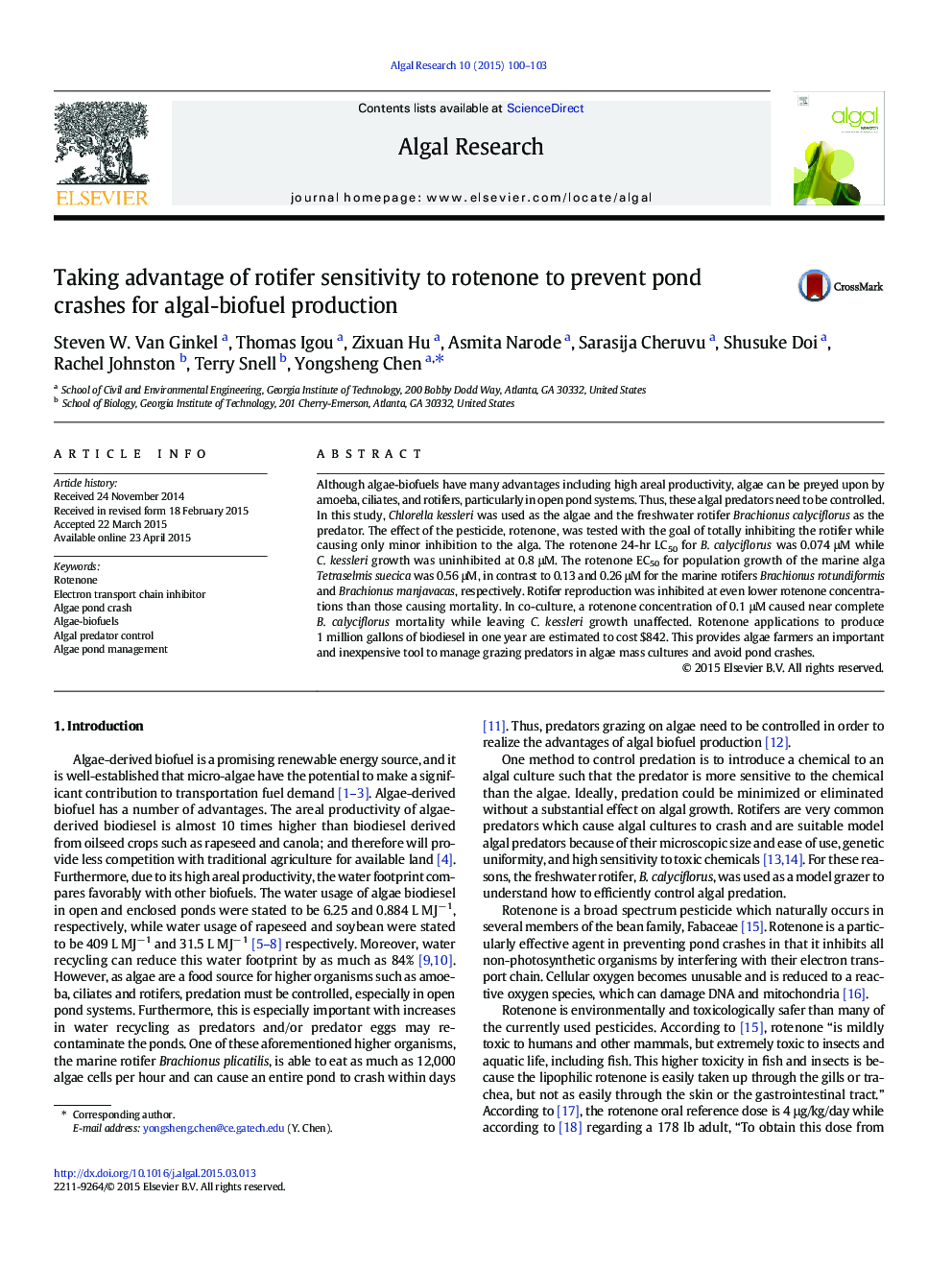| Article ID | Journal | Published Year | Pages | File Type |
|---|---|---|---|---|
| 1742014 | Algal Research | 2015 | 4 Pages |
•Rotenone (0.1 uM) inhibited algal predators while causing minor inhibition to algae.•Rotifer reproduction inhibited at lower concentrations than those causing mortality•Rotenone applications to produce 1 mgy biodiesel are estimated to cost $842.•Rotenone provides algae farmers an important and inexpensive tool.•Rotenone will not persist in the environment if accidentally discharged.
Although algae-biofuels have many advantages including high areal productivity, algae can be preyed upon by amoeba, ciliates, and rotifers, particularly in open pond systems. Thus, these algal predators need to be controlled. In this study, Chlorella kessleri was used as the algae and the freshwater rotifer Brachionus calyciflorus as the predator. The effect of the pesticide, rotenone, was tested with the goal of totally inhibiting the rotifer while causing only minor inhibition to the alga. The rotenone 24-hr LC50 for B. calyciflorus was 0.074 μM while C. kessleri growth was uninhibited at 0.8 μM. The rotenone EC50 for population growth of the marine alga Tetraselmis suecica was 0.56 μM, in contrast to 0.13 and 0.26 μM for the marine rotifers Brachionus rotundiformis and Brachionus manjavacas, respectively. Rotifer reproduction was inhibited at even lower rotenone concentrations than those causing mortality. In co-culture, a rotenone concentration of 0.1 μM caused near complete B. calyciflorus mortality while leaving C. kessleri growth unaffected. Rotenone applications to produce 1 million gallons of biodiesel in one year are estimated to cost $842. This provides algae farmers an important and inexpensive tool to manage grazing predators in algae mass cultures and avoid pond crashes.
